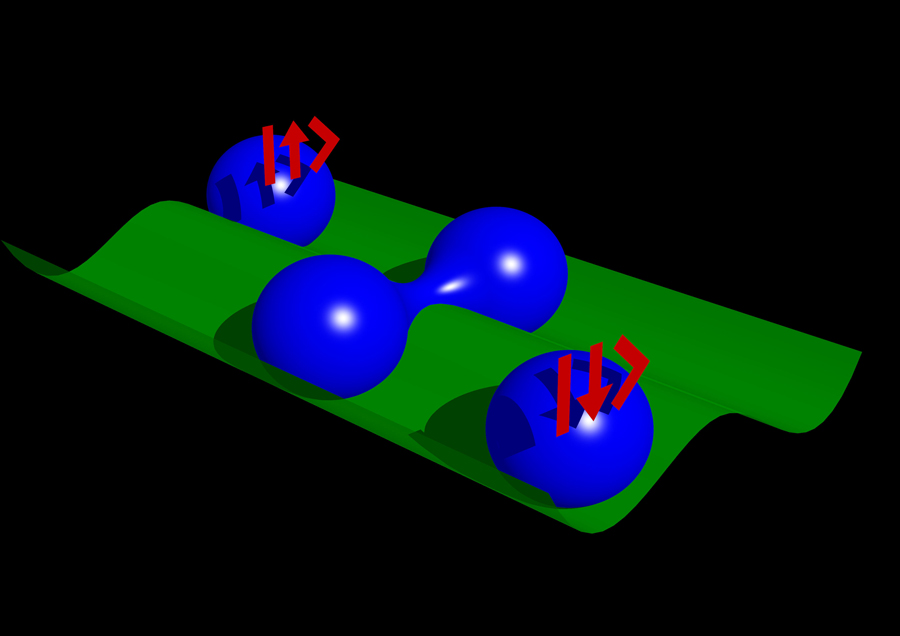Generating qubits in a semiconductor
March 26, 2012

Dual channel allows electrons to maintain phase; states are denoted by arrows (credit: Andreas Wieck)
Ruhr-Universität Bochum (RUB) physicist Prof. Dr. Andreas Wieck and colleagues have used the trajectories of an electron through two closely spaced channels for encoding qubits in a semiconductor for the first time (instead of a vacuum).
Normally, an electron wave moves through a solid body on many different paths at the same time. Due to impurities in the material, it loses its phase information and thus its ability to encode a particular state.
To maintain the phase information, the RUB researchers grew a high-purity gallium arsenide crystal and used a dual channel proposed by Wieck more than 20 years ago.
In this dual channel, electrons move in a tunnel on defined, parallel paths. Only one single electron fits through at a time. With this coupling, the electron can switch back and forth between the channels, thus occupying two different states. The electron virtually flies in both tracks at the same time; its two states overlapping. The phases of the electron waves are maintained by this coupling.
“Unfortunately, not all the electrons take part in this process, so far it’s only a few percent,” commented Wieck. “Some students in my department are, however, already working on growing crystals with higher electron densities.”
Ref.: Michihisa Yamamoto, et al., Electrical control of a solid-state flying qubit, Nature Nanotechnology, 2012; [DOI:10.1038/nnano.2012.28]